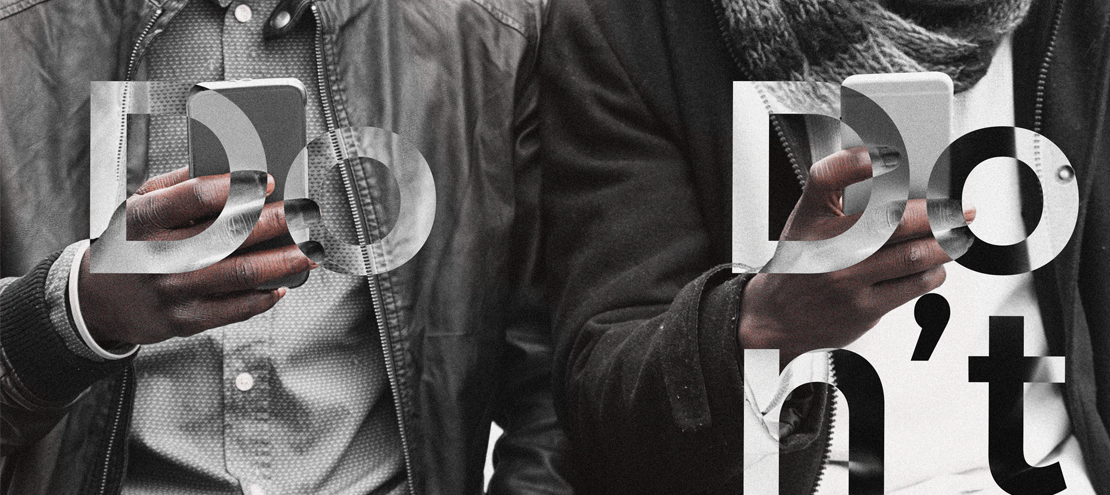What’s in this article:
- User-generated content is valuable to marketers as it is usually the most trustworthy source of content for customers before they make the decision to purchase a product from your brand
- In a world where it’s so easy to reshare social media posts, though, here are the dos and don’ts of UGC
Customers are more likely to purchase products with authentic marketing, and the most trustworthy source is usually another customer. That’s why user-generated content is valuable to marketers. Leveraging user photos, videos, and blog posts from enthusiastic customers is a quick and low-cost way to showcase your brand — but such a campaign won’t run itself. Like any initiative, you need to start with the right strategy.
Become the best CRMer you can:
CRM Hack: Monitoring the User’s Heartbeat
What Does It Mean to Treat a Customer’s Email With Respect?
To Lock or Not to Lock Customers (into CRM Journeys)
What the Efforts to Promote Responsible Gaming Look Like Form the Inside
Do: Be upfront
It really should go without saying, but in a world where it’s so easy to reshare social media posts, let’s reiterate it here — you need the creator’s permission to reuse their content, even if it’s already being widely shared. This is especially true if you intend to repost from a branded account.
Social media etiquette dictates that you must cite your source when sharing or reusing content, whether it’s a copy-paste image or user-generated audio added to your branded TikTok video. If you don’t, the perception is that you are claiming ownership of the post, and that can backfire spectacularly — perhaps even in a legal sense.
Unlike the vast majority of internet users who share and remix content, you represent a brand that is looking to increase profits or your marketing reach. So be upfront, be professional, and always ask for permission first.
Don’t: Confuse user-generated content with influencer marketing
There is a significant overlap between user-generated content and influencer marketing, but there are crucial differences one cannot overlook. Influencers can create user-generated content, but so can enthusiastic fans of your brand. If you try to treat influencers and fans as though they are the same, you risk missing the benefits of both strategies.
Marketers cannot approach influencers as everyday customers. Influencers have their own established brands, and the value of partnering with them lies in reaching their audiences. User-generated campaigns, on the other hand, tend to spread organically through reposts and well-optimized hashtags.
This distinction is crucial because many influencers don’t create content for free — they do it to develop their brand. Influencer content is more likely to result from a direct partnership that includes some compensation, such as sponsorships or free products. Treating them as enthusiasts who create branded content for free is the quickest way to guarantee they will not work with your brand. If you’re approaching an established influencer with a marketing proposal, it pays to treat them with professional courtesy.

Do: Monitor UGC campaigns
User-generated campaigns on Instagram, Snapchat, or TikTok are appealing because they quickly drive organic traffic to brand channels. Unfortunately, there is a dark side to consider: you have no guarantee that what fans create is brand-safe. User-generated campaigns do not belong to you, making it easy for trolls and bad actors to co-opt them against you.
Any attempt at launching a user-generated campaign — especially one driven by hashtags — requires a community management team to quickly address hate speech, pornography, or other inappropriate content. Blizzard Entertainment discovered this first-hand when the Overwatch video game inspired an overwhelming volume of sexually explicit content. While removing this content from the internet is next-to-impossible, Blizzard makes a concerted effort to acknowledge fan creativity while carefully separating this content from the brand.
Even with automated tools at your disposal, monitoring content 24 hours a day can be a resource-intensive task. But it’s certainly better than the alternative — showing your fans how Rule 34 is a very real phenomenon.
Don’t: Limit yourself to one platform
Thanks to the prevalence of social media platforms, user-generated content is a scalable marketing strategy. Facebook’s integrated sharing tools make it easy for users and brands alike to share their content. TikTok’s extensive video creation tools make it easy to design and remix original work. From a marketing perspective, it makes sense to let users leverage these tools to your benefit.
Don’t be afraid to expand your user-generated campaigns beyond the platforms where they began. Each additional social network is an opportunity to reach multiple audiences and gain more followers. Just remember that each platform has its own conventions for marketers to research — Twitter posts are an entirely different medium from Snapchat videos, to say nothing of user habits and tagging policies.
This brings up one final point:
Do: Focus on your audience’s platforms
Yes, this contradicts the previous point, but it is equally valid. While user-generated content is low cost, marketers still have limited time and resources at their disposal. If you cannot manage multiple social media accounts, focus on those which host your target audience.
Facebook and Instagram are an excellent case study. While the same company owns both networks — at least for now — the audiences are very different. Of the two, Facebook favors Boomers and Generation X, while Instagram leans towards Millennials and Generation Z. Maintaining a presence on both platforms is easy, but if your customers are primarily Gen Z, a user-generated campaign will go farther on Instagram.
If nothing else, remember that user-generated content is about your community. Your goal is not just to showcase a product but also a positive relationship you have with loyal fans. When handled correctly, that goodwill will become apparent in any user-generated content you ultimately showcase.
The post The Dos and Don’ts of User-Generated Content appeared first on Post Funnel.




